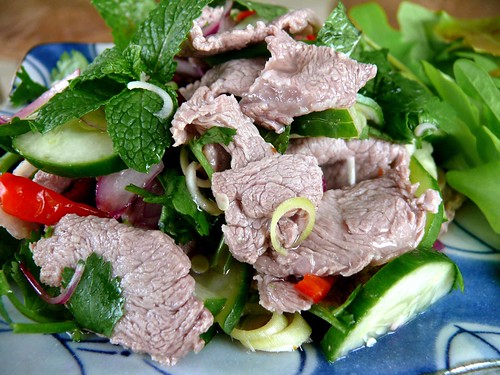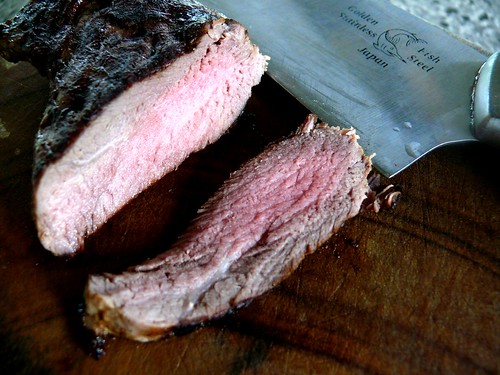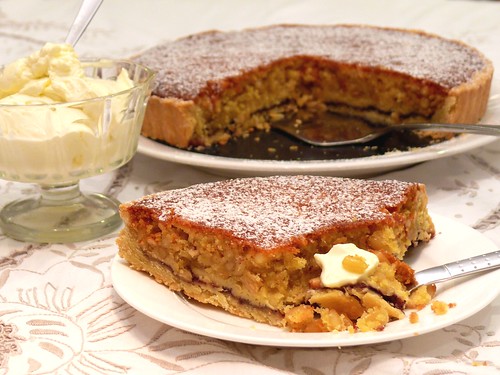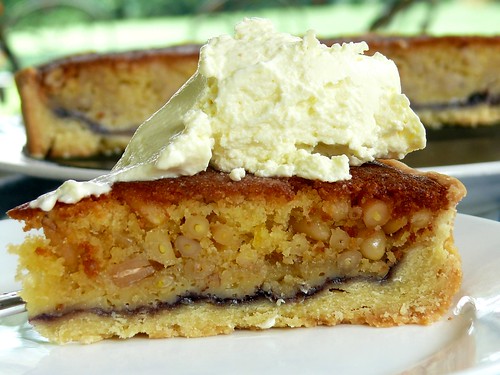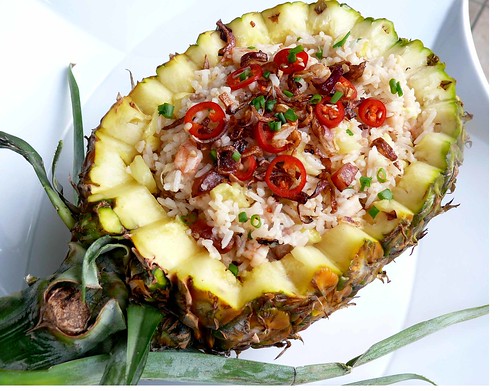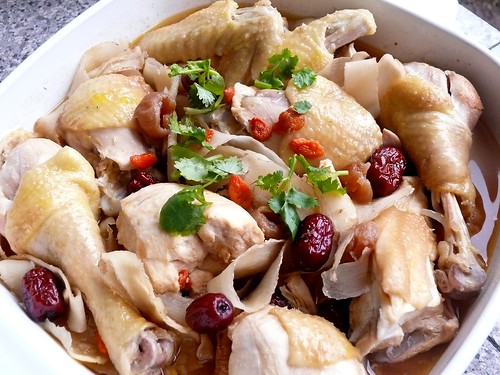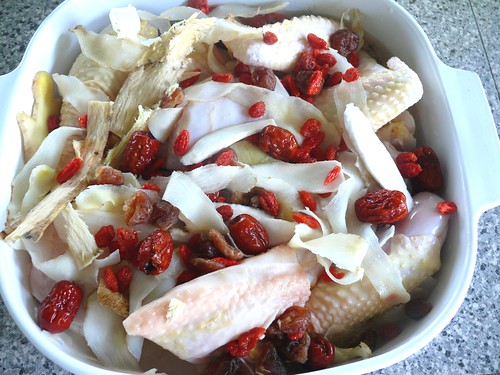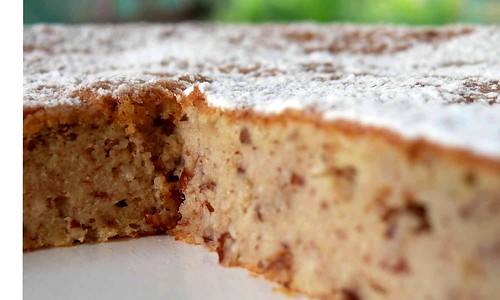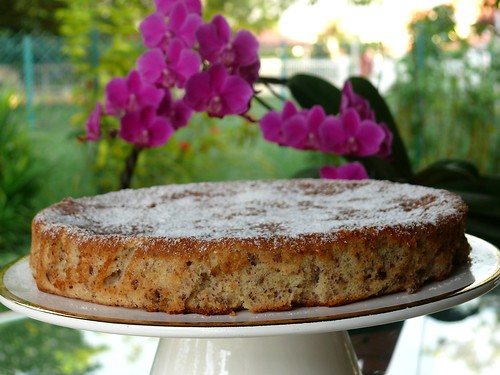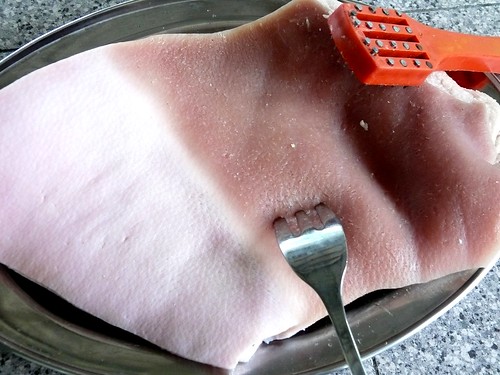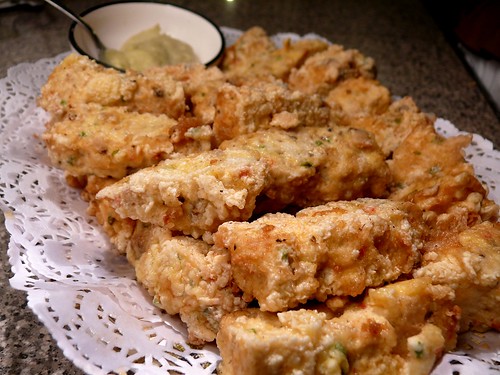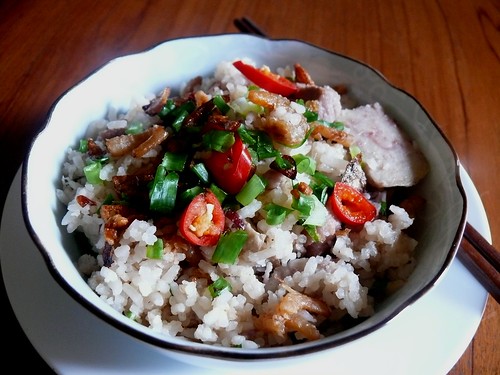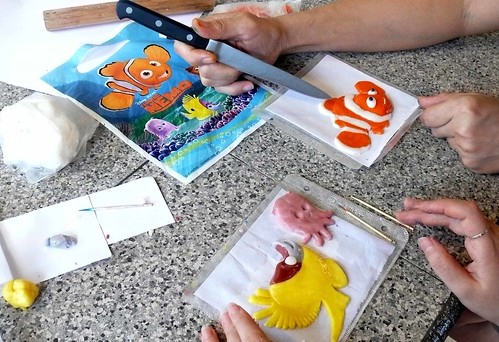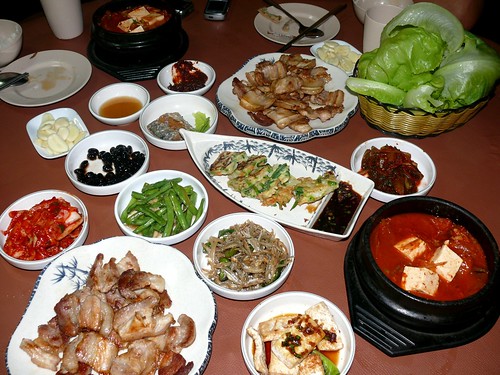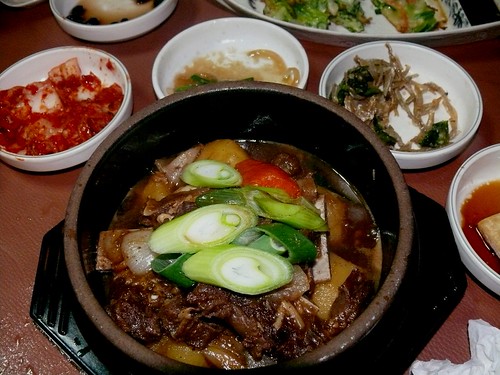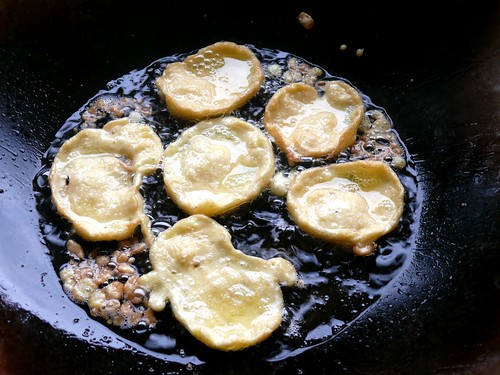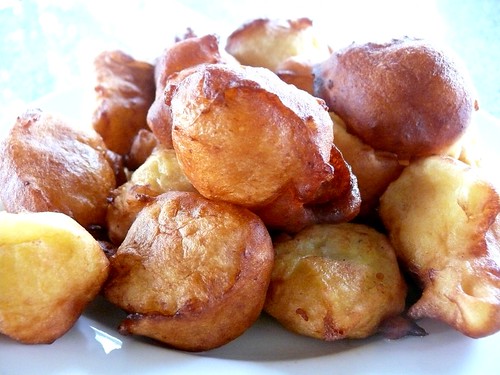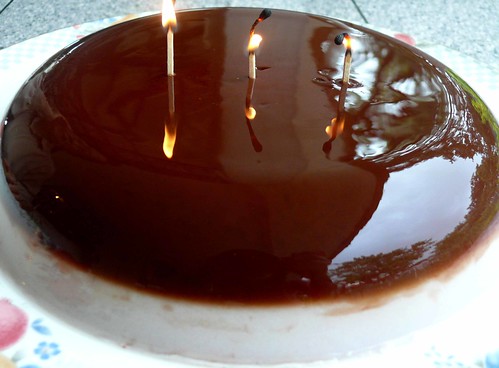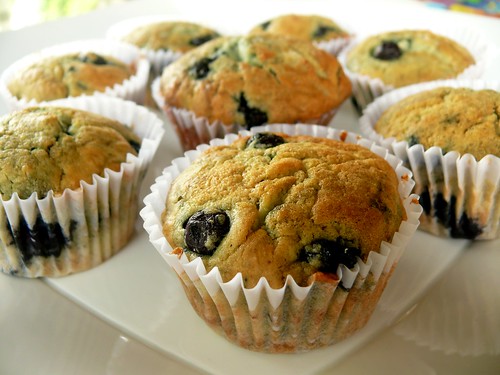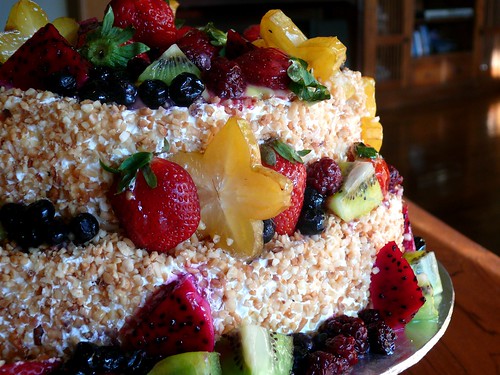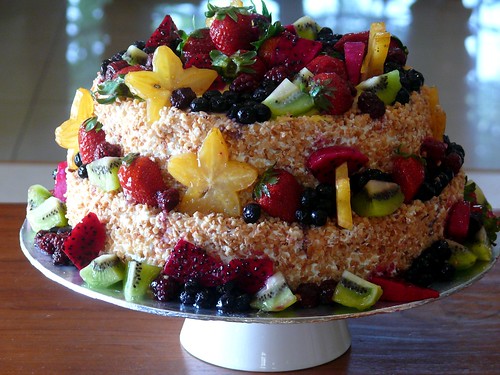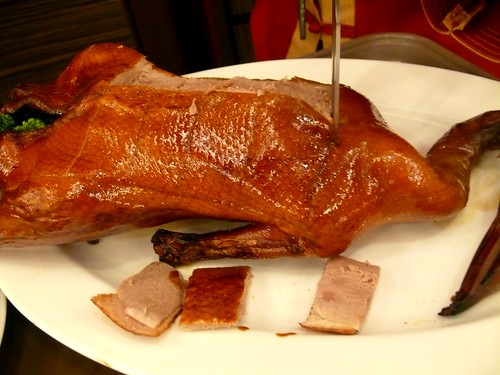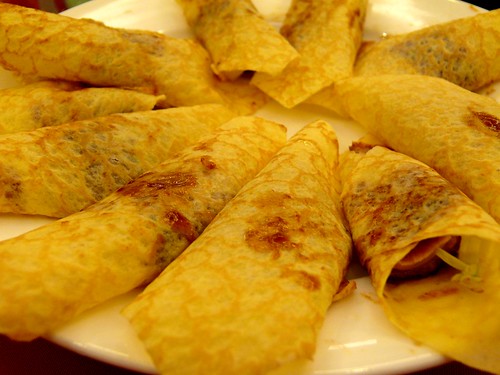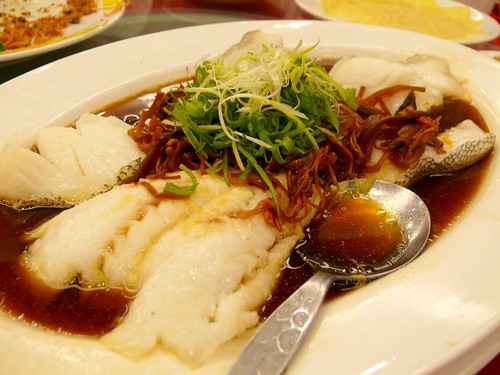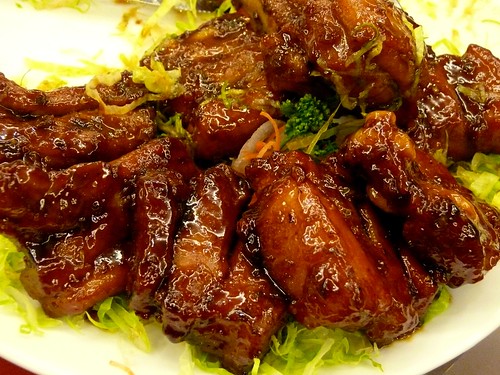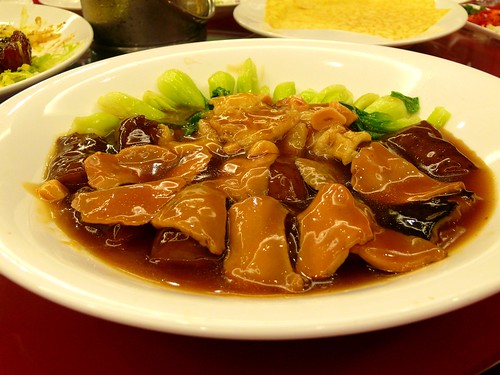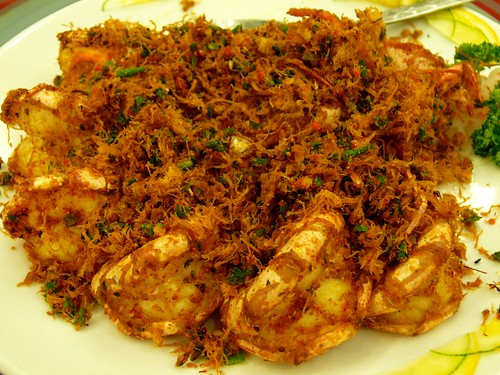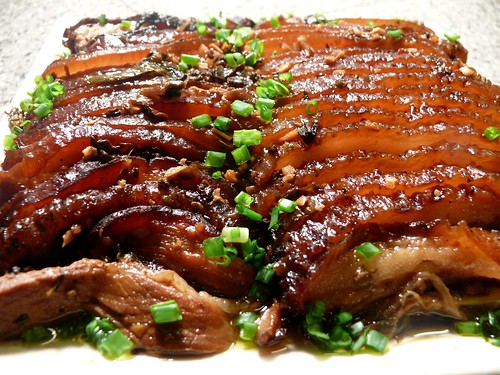
My Sichuan friend Leila always talked of her mother's
kourou as being the best. I've only eaten Hakka pork and yam
kourou and Cantonese
meicai kourou, both of which I love more and more with age. Most families here will cook
kourou only on festivals because it is not only a rather laborious and time-consuming dish to do, it is a heart-stopper that should only be eaten only a few times a year.
I brought Leila to the market recently and we went 3 rounds before deciding on the fattest slab of belly pork we could find. Apparently belly pork or '5-flower meat' (
wuhuarou) is very much leaner here than in China where people love the jittery fat and would never take off the fat when they eat, which is what most of us do here. My son Wey loves fat, especially pork fat. Maybe it's from years of deprivation, but the fella will even pick up fat that we discard on our plates. And he pops it into his mouth so quickly I can't even stop him. I think half the plate of
kourou in the pic was eaten by Wey, and this guy never cares for Hakka or Cantonese
kourou so it does say something about Leila's mom's recipe.
The
meicai that we get here are whole bunches of preserved veg while those Leila brought is all minced up and flavored. Our
meicai has to be washed and soaked to reduce the saltiness but Leila's
meicai is ready for cooking. I'm not sure if her kind of
meicai is available anywhere else. If you can't find it, substitute with Cantonese
meicai. Although Sichuan
kourou looks more refined and better than Cantonese
meicai kourou because honey rubbed on the skin, and the way the pork is prepared, gives a redder, lip-smacking skin, I prefer Cantonese
kourou for the tons of
meicai used with the meat but I like the taste of Sichuan
kourou seasoning so a fusion of the two ways of cooking it, using lots of Cantonese
meicai and the seasoning ingredients of Sichuan
meicai should theoretically make The Best
Meicai Kourou. I will try it one day when I have 5 helpers to assist me.
It is hard to give the exact amount of the ingredients used. Leila added this and that arbitrarily and I guess it's all about experience and cooking sense.

This was the first piece Leila fried. The latter pieces were fried to a deep black-brown and turned out better. Look at the thin, neat and even slices of pork (and that impossibly soft, never-worked-a-day hand), and count the 5 layers: meat, fat, meat, fat and skin.
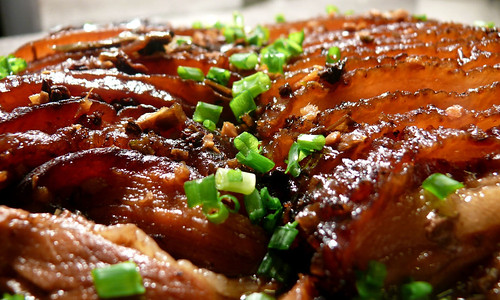 Sichuan Meicai Kourou
Sichuan Meicai Kourou
3 pieces belly pork with reasonable layers of fat, 5"/12 cm wide and 7"/18 cm long each
1. Put the clean pork belly into a large pot of boiling water and boil 5 to 10 minutes. Remove the belly pork (keep the pot of water) and let pork drain, skin-up, on a wire rack. Leave for an hour or till the skin is no longer wet. This can be done one night ahead and pork left uncovered in the fridge to dry.
2. Mix some honey and
shaoxin wine and smear this over the pork skin.
3. Heat up 6 cups of oil in a large wok and deep-fry the pork, skin-side down, until the skin turns very dark brown-black.
4. Remove the fried pork and put it into the pot of water it was previously boiled in, and boil another 10 to 15 minutes. this will render the skin very 'crepey' and good to eat.
5. Remove the pork, leave to cool and slice into very neat and even slices of 1/2 cm only. Anything thicker would make you queasy because of the fat.
6. Arrange pork, skin-side down, in a deep dish and pour the following seasoning all over:
Seasoning: mix salt, minced ginger and garlic, dark and light soy sauces, sugar, msg, Sichuan peppercorn powder.
7. Top the pork with finely minced
meicai. If using Cantonese
meicai, soak it beforehand to reduce saltiness and mix with the seasoning. If using the ready-minced and seasoned
meicai, scatter it all over the pork after the seasoning.
8. Steam
kourou for 1 1/2 to 2 hours until the fat is tender and a bit sticky. The point at which the pork fat turns sticky must be reached or the
kourou is deemed not ready.
9. Pour the gravy out into a bowl and skim off the oil. Put a large deep dish (pref. the deep part of the dish should be just the area of the pork so the pork slices will remain in one block) over the pork and quickly and firmly turn the pork dish over onto the plate so that the pork is skin-side up. Pour the skimmed gravy over. Serve hot, with plain rice.
